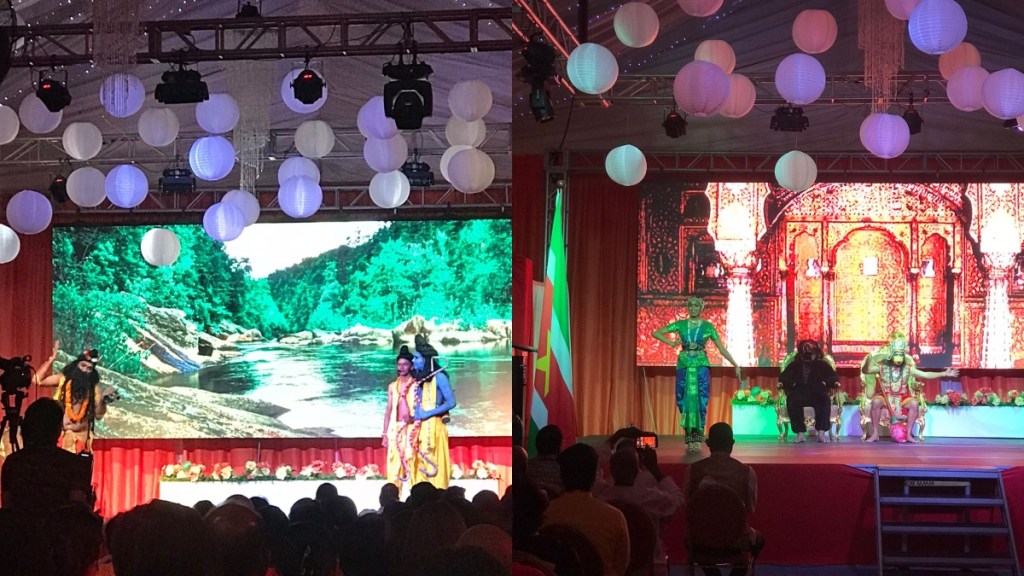By Ambassador Aashna Kanhai
I was on Indian soil when the verdict of the Supreme Court of India was awarded and the legal existence of RamlallaVirajman was confirmed. As time proceeded, the Ram mandir was built. I left India, mid 2021, after concluding my diplomatic tenure. Many of the ancestors of today’s Persons of Indian Origin (PIO), were devotees of Shree ram.
In fact, the recruiters in the early 19th century, lured many from Uttar Pradesh with the slogan: ‘chalo Shree Ram de desh’. Suriname sounded like Shree Ram. Notably, the kantraki’s carried little luggage and some entered the ship with a pair of dhotis, or two saree’s and a Ramayan or Koran. While getting accustomed to the sugar plantations in the Dutch colony Suriname, the Kantraki’s organized Ramleela performances and collective readings of the Ramayana, while holi every year started with singing of Chaupai based on the Ramayana.
As the generation after the Kantraki’s in Suriname were able to participate in education, religious and socio-cultural organisations were set up and Mandirs and masjids were built on the soil of Suriname. Names of places like Ayodhya, Mithila and Kiskindha are part of the pravachans during the weekly mandir services till date. Though the descendants of the kantraki’s never saw Ayodhya, they knew for sure that Lord Rama was born there. The Sanatan Dharma Maha Sabha under leadership of pandit Nitin Jagbandhan organized a Ram Janam Bhoomi pujan, one day before the consecration. Many POIs sponsored the venue, snacks, music and speeches and at least a 1000 assembled to participate in the Havan, which started the celebrations of religious solidarity. Suriname took part in the joy of the consecration of the Ram Mandir. Chaupais were sung in a traditional chautala musical form, a heritage of the Kantraki’s.
During the speech of a local pandit, Shree Nandoe Tewari, a short history was narrated of the challenges faced over time regarding the Ram mandir. Our ancestors had left before the dispute was vocal. The deputy speaker of the Parliament, a follower of the Arya samaj, highlighted the qualities of Shree Ram as the personification of Truth and he made reference to the last World Hindu Conference, where a resolution had been adopted that Hindutva or Hindu Dharma should be used instead of Hinduism when referring to the religion. The Highlight of the evening was the live performance of Ramleela, by local actors, an interactive digital décor and professional Bharat Natyam dancers, pupils from Ms. Sadhana Mohan, a Surinamese Bharat Natyam teacher.
The language used in the Ramleela was Sarnami, a Surinamese language based on Hindi, Awadhi and Maithili, some may call it Bhojpuri from Suriname. The Indian Ambassador, Shankar Balachandran, acknowledged the contribution of Suriname in the consecration of the Ram Mandir and mentioned that what is lost in India, can be found in Suriname, referring to the conservation of Indian tradition and culture in Suriname. The growth of the Indian economy will soon make the world look up to us, he said in full shudh Hindi. Somehow, I felt like I was close to Ayodhya, yet I experienced cultural solidarity from my own people here in Suriname towards the land of the ancestors, so much of reconnecting…
The author was the Ambassador of Suriname to India.
Disclaimer: Views expressed are personal and do not reflect the official position or policy of Financial Express Online. Reproducing this content without permission is prohibited.


